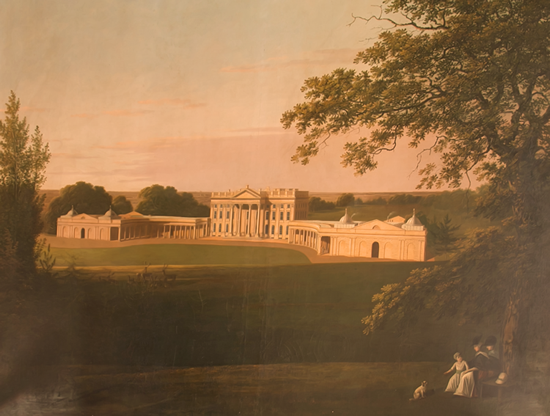| Welcome to this part of the
|
||
| Sir Laurence Dundas the son of Thomas Dundas of Fingask, was the founder of the
Sir Thomas' s son, who was also named Laurence became 1st Earl of Zetland in 1838 and his grandson, another Laurence became the Ist Marquess of Zetland in 1892. Sir Laurence Dundas started of in life as a merchant in Laurence had made his home at Kerse in Stirlingshire, which he had bought by 1749. This was not however his only property. He also had purchased a residence in |
|
| Moor Park, Hertfordshire |
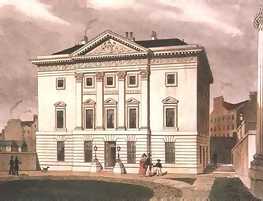 |
| Dundas House, Edinburgh
|
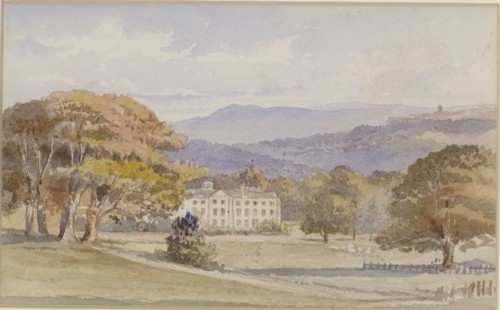 |
| Upleatham Hall, painted by Lady Dundas in 1891 |
| Besides the great landed estates which he purchased, Sir Laurence also had a controlling interest in the Forth and Clyde Navigation Company whose canal passed through his land. He was a director of the Royal Bank of Sir Laurence was a great patron of the arts and formed a magnificent collection of paintings and tapestries along with furniture by Chippendale. Sir Laurence entered politics as M.P. for Linlithgow Burghs in 1747 and Orkney and Shetland in 1766. He received a Baronetcy in 1762. On the death of Sir Laurence, his son, Thomas succeeded to the baronetcy and estates at the age of 41 years. |
||
 |
|
| Aske Hall | |
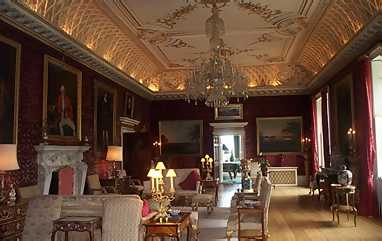 |
| The drawing room at Aske hall |
| By kind permission of the Marquess of Zetland |
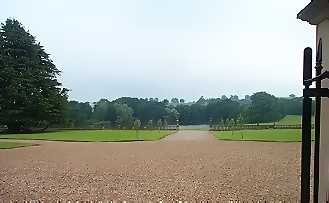 |
| View of the lake at Aske hall
|
| Painting by the Rev. Mr Peters |
| By kind permission of the Marquess of Zetland |
| A photograph of a painting hanging at Aske Hall,
The portrait shows Sir Laurence Dundas and his wife Margaret Bruce, along with Sir Thomas Dundas, his wife Charlotte and several of their children. Unfortunately, a light reflection has been caught on camera which has resulted in a loss of quality. |
| Bulmer's History and Directory of
|
| ASKE is a township of 1,764 acres,
containing 211 inhabitants, and valued for rateable purposes at £1,683. The
surface is undulated, the soil fertile, and in high state of cultivation. It is
written Asse in Domesday Book, and had, previous to Norman usurpation, belonged
to Tor, a Saxon. Soon after the Conquest, the manor was granted to Whyomar,
kinsman and sewer* to Alan, the first Earl of
Aske, the principal seat of his lordship, is a spacious and elegant stone mansion, the outcome of many additions to the castelette of the Askes and Bowes since it came into the possession of the present family, and the mansion is now one of the most stately of English halls. Many improvements have been effected by the present noble owner. Amongst these may be mentioned the pretty little private chapel and the hunting stables. The latter were completed in 1877, and will compare favourably in architectural design and internal comfort and convenience with any other in the country. There is accommodation for about 50 horses. The hall is surrounded by an extensive and well wooded park containing a large artificial lake. On the 23rd of Jannary, 1889, Aske was honoured with the presence of royalty, in the persons of the Prince and Princess of Wales, who were the guests of the noble earl during their visit to Yorkshire, for the purpose of opening the new Municipal Buildings at Middlesbrough. Prince Albert Victor, their eldest son, was also a visitor here about two years ago. On the Richmond and Gilling road is Aske school, erected by the Countess of Zetland in 1876, for the benefit of the children of the workpeople on the estate, to whom it is free, it is entirely supported by her ladyship. |
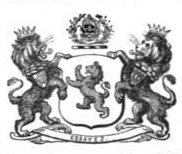 |
| Zetland coat of arms |
| Link to Sir Laurence Dundas, ancestor to the Earls of Zetland |
| Link to home page |


